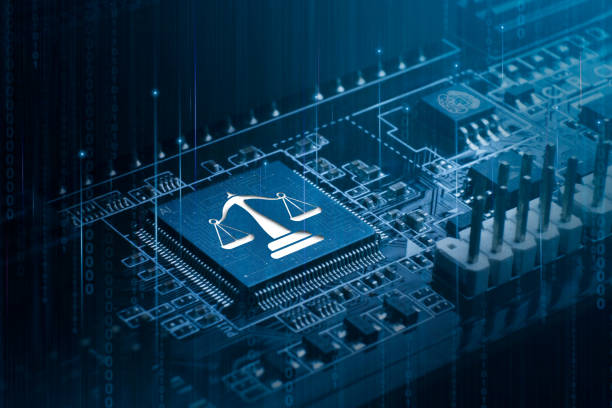Blockchain technology is often described as one of the most significant innovations of the 21st century, revolutionizing how data is stored, verified, and shared across the internet. It has given rise to cryptocurrencies, decentralized finance, supply chain tracking, digital identity systems, and much more. Yet, beyond its applications lies a profound and intricate field of study: the science of blockchain security.
Blockchain security is not merely about protecting digital coins or preventing hackers from stealing assets. It is an interdisciplinary field that combines cryptography, computer science, game theory, network engineering, and economics to create trust in a system where no central authority exists. The entire architecture of blockchain relies on mathematical proofs, cryptographic protocols, and consensus mechanisms to ensure integrity, authenticity, and immutability.
Understanding the science of blockchain security requires a deep dive into the mechanisms that make it resilient to attacks, the vulnerabilities that threaten it, and the continuous evolution of defensive strategies.
The Foundations of Blockchain Technology
Before exploring the details of blockchain security, it is essential to understand what a blockchain is and how it functions. At its core, a blockchain is a distributed ledger that records transactions across a network of computers. Each transaction is grouped into a block, and each block is linked to the previous one using cryptographic hashes, forming an immutable chain.
Unlike traditional centralized databases controlled by a single authority, a blockchain operates in a decentralized manner. Every participant, or node, in the network holds a copy of the ledger. When a new transaction occurs, it must be verified and approved by the network according to a consensus protocol. Once validated, it becomes a permanent part of the blockchain.
This decentralized structure provides transparency and resilience. Since every node has access to the ledger, tampering with the data in one node does not alter the overall system. To corrupt a blockchain, an attacker would need to compromise the majority of the network’s nodes simultaneously, an endeavor that is computationally and economically impractical for large networks.
However, this apparent simplicity masks extraordinary complexity. Blockchain security depends on layers of mathematical and computational principles that work together to establish trust in a trustless environment.
The Cryptographic Backbone
The science of blockchain security begins with cryptography—the mathematical discipline concerned with encoding and protecting information. Cryptography ensures that blockchain transactions are secure, that users can authenticate themselves without revealing private information, and that the integrity of data is maintained.
At the heart of every blockchain lies two essential cryptographic techniques: hash functions and public-key cryptography.
A hash function takes input data of any size and produces a fixed-size output, known as a hash or digest. The hash acts like a digital fingerprint for the data—it is unique, deterministic, and irreversible. Even a tiny change in the input produces a completely different output. Hash functions such as SHA-256 (used in Bitcoin) or Keccak-256 (used in Ethereum) ensure that no one can alter the data within a block without changing its hash value, thereby revealing tampering attempts immediately.
Public-key cryptography, also known as asymmetric cryptography, enables secure identity and authentication in blockchain systems. Each participant has a pair of keys: a private key known only to them and a public key shared with others. Transactions are signed using the private key, and the signature can be verified using the corresponding public key. This mechanism ensures that only the rightful owner of a digital asset can authorize its transfer, while the entire network can verify the legitimacy of that transaction without knowing the private key itself.
Together, these cryptographic mechanisms form the foundation of blockchain integrity and trust. They replace traditional third-party intermediaries—such as banks, notaries, or governments—with mathematical certainty.
Consensus Mechanisms and Trust Without Authority
In traditional centralized systems, trust is enforced by a single authority. In blockchain, where no central authority exists, consensus mechanisms ensure agreement among all participants on the state of the ledger. These mechanisms are the heart of blockchain security, allowing nodes to validate transactions and add new blocks in a fair and tamper-resistant way.
The most well-known consensus mechanisms are Proof of Work (PoW) and Proof of Stake (PoS).
Proof of Work, introduced by Bitcoin’s creator Satoshi Nakamoto, requires participants—known as miners—to solve complex mathematical puzzles to validate transactions and create new blocks. This process, called mining, consumes significant computational resources and energy. The difficulty of the puzzles makes it extremely expensive for attackers to alter the blockchain. To rewrite the chain, they would need to control over half the total computing power of the network, a feat known as a 51% attack.
Proof of Stake, by contrast, relies on participants staking their cryptocurrency holdings to validate transactions. Instead of expending energy, validators are chosen based on the amount they have staked, making attacks economically disincentivized. If a validator acts maliciously, their stake can be “slashed” or confiscated.
Other consensus algorithms, such as Delegated Proof of Stake (DPoS), Practical Byzantine Fault Tolerance (PBFT), and Proof of Authority (PoA), further refine the balance between security, decentralization, and efficiency. Each has its own strengths and weaknesses depending on the desired network structure and application.
The mathematical rigor behind these protocols ensures that even in the presence of faulty or malicious nodes, the network can continue to operate securely—a principle known as Byzantine fault tolerance.
The Immutable Ledger and Tamper Resistance
One of blockchain’s most celebrated features is immutability—the inability to alter past records once they have been confirmed. This property is achieved through a combination of cryptographic hashing and the chained structure of blocks.
Each block contains a cryptographic hash of the previous block, linking them together in a chronological sequence. If an attacker attempts to alter the data in one block, its hash will change, breaking the link with subsequent blocks. To successfully rewrite history, the attacker would have to recalculate all subsequent hashes and outpace the honest network’s computational or staking power, an endeavor that becomes exponentially more difficult as more blocks are added.
This immutability gives blockchain its value in applications such as supply chain tracking, voting systems, and digital identity management, where tamper-proof records are critical. However, immutability also introduces challenges. Errors, bugs, or fraudulent transactions cannot easily be reversed, meaning that human oversight and governance must complement mathematical security.
Network Security and Decentralization
Blockchain’s distributed architecture provides inherent resilience against many forms of attack. Since there is no central point of control, traditional cyberattacks like data breaches or server takeovers become far less effective.
Every node in the network stores a copy of the entire ledger, ensuring redundancy. Even if some nodes fail or are compromised, others continue to maintain the blockchain’s integrity. Communication between nodes is typically encrypted, and peer-to-peer protocols prevent eavesdropping or tampering during data transmission.
However, decentralization also introduces new challenges. Nodes can be targeted individually through denial-of-service (DoS) attacks, where malicious actors flood them with excessive requests, or through network partitioning, where attackers attempt to isolate groups of nodes from one another. Maintaining the balance between decentralization, efficiency, and security is a constant challenge in blockchain design.
The Double-Spending Problem and Its Solution
One of the most fundamental challenges that blockchain solves is the double-spending problem—the risk that digital assets could be duplicated or spent more than once. In traditional systems, this problem is prevented by a central authority that verifies every transaction. In decentralized blockchain networks, this role is replaced by cryptographic verification and consensus.
When a transaction is broadcast to the network, it is verified by multiple nodes and added to the blockchain only when consensus is reached. Once confirmed, the transaction becomes part of an immutable record, making it impossible to spend the same asset again.
This decentralized solution to double spending is what made digital currency possible for the first time. It ensures that ownership is clear, transactions are final, and trust is established through mathematics rather than intermediaries.
Smart Contracts and Security Implications
With the advent of second-generation blockchains like Ethereum, the concept of smart contracts emerged—self-executing programs that run on the blockchain. Smart contracts automatically enforce rules and agreements without human intervention. They enable decentralized applications (dApps), token exchanges, and complex financial instruments known as decentralized finance (DeFi).
However, smart contracts introduce new security challenges. Because they are pieces of code, they are susceptible to programming errors and logical vulnerabilities. Once deployed on the blockchain, a smart contract cannot easily be altered, meaning that any bugs are permanent and exploitable.
Notable security incidents, such as the DAO hack in 2016, demonstrated the risks of poorly written smart contracts. Attackers exploited a recursive call vulnerability to drain millions of dollars worth of ether. This incident led to the infamous Ethereum hard fork, splitting the blockchain into Ethereum (ETH) and Ethereum Classic (ETC).
To mitigate these risks, formal verification, code auditing, and standardized libraries are increasingly used to ensure the correctness of smart contract logic. Advanced programming languages like Vyper and Move are designed with security in mind, reducing the likelihood of vulnerabilities.
Privacy and Anonymity in Blockchain Systems
While blockchain offers transparency by making all transactions publicly visible, this openness raises significant privacy concerns. Users’ addresses and transaction histories are traceable, even if their real-world identities are pseudonymous. This duality—transparency versus privacy—is one of blockchain’s most challenging ethical and technical dilemmas.
To address this, researchers have developed privacy-enhancing technologies such as zero-knowledge proofs, ring signatures, and confidential transactions.
Zero-knowledge proofs (ZKPs) allow one party to prove the truth of a statement without revealing any underlying information. In blockchain, ZKPs enable private transactions that can be verified without disclosing amounts or participants.
Ring signatures, used in cryptocurrencies like Monero, mix a user’s transaction with others, making it statistically impossible to determine the actual sender. Confidential transactions, pioneered by Bitcoin developer Greg Maxwell, hide transaction amounts while ensuring that balances remain valid.
Privacy-focused blockchains like Zcash, Monero, and Secret Network employ these techniques to balance transparency with user confidentiality. However, regulators often express concern that such anonymity can facilitate illicit activity, creating ongoing tension between privacy rights and legal compliance.
Attack Vectors in Blockchain Networks
Despite its security-by-design approach, blockchain is not immune to attacks. Understanding potential vulnerabilities is crucial for maintaining its integrity.
The most famous threat is the 51% attack, where an entity gains majority control of the network’s computational or staking power, allowing them to double-spend or censor transactions. While such attacks are theoretically possible, they are prohibitively expensive on large networks like Bitcoin or Ethereum. Smaller blockchains, however, remain at risk.
Sybil attacks occur when a malicious actor creates multiple fake identities to gain disproportionate influence in a peer-to-peer network. Blockchain mitigates this by requiring computational work or staking, making identity forgery costly.
Another major risk is the eclipse attack, in which an attacker isolates a node and controls all its incoming and outgoing communication. By feeding false information, they can manipulate transaction verification.
Smart contracts also face unique threats, including reentrancy attacks, integer overflows, and logic manipulation. These vulnerabilities can be exploited to steal funds or disrupt decentralized applications.
The science of blockchain security constantly evolves to identify, analyze, and mitigate such vulnerabilities through cryptographic innovation and network design improvements.
Quantum Computing and the Future of Blockchain Security
A looming challenge for blockchain security is the rise of quantum computing. Quantum computers, which leverage quantum bits (qubits) to perform massive parallel computations, could potentially break the cryptographic foundations of blockchain systems.
Algorithms like SHA-256 and ECDSA, currently used for hashing and digital signatures, rely on mathematical problems that are hard for classical computers but could be solved efficiently by quantum algorithms such as Shor’s algorithm.
If large-scale quantum computers become practical, they could theoretically forge signatures, reverse hashes, or even take over blockchain networks. This has spurred the development of post-quantum cryptography—new algorithms designed to withstand quantum attacks.
Lattice-based cryptography, hash-based signatures, and multivariate polynomial cryptosystems are among the most promising approaches. Researchers are actively exploring how to integrate these quantum-resistant methods into future blockchain protocols to ensure long-term security.
The Economics of Blockchain Security
Blockchain security is not only a technical issue but also an economic one. Every blockchain network is an economic ecosystem where participants are incentivized to behave honestly through rewards and penalties. This concept, known as cryptoeconomics, merges cryptography with game theory to align individual interests with network security.
In Proof of Work systems, miners invest computational resources in exchange for rewards. Attacking the network would require them to waste massive energy and hardware investment, making dishonesty irrational. In Proof of Stake systems, validators risk losing their staked assets if they attempt malicious actions.
This economic layer creates a self-reinforcing security model. The cost of attacking the network usually exceeds the potential benefit, ensuring stability through rational economic behavior. The game-theoretic analysis of blockchain has become a rich field of academic research, examining how incentives can be optimized to prevent collusion, manipulation, and systemic failures.
Governance, Regulation, and Human Factors
No matter how robust a blockchain’s cryptography or consensus algorithm may be, human behavior remains a critical factor in its security. Governance models—how decisions are made, protocols are upgraded, and disputes are resolved—can either strengthen or weaken the system.
On-chain governance allows stakeholders to vote directly on protocol changes, while off-chain governance relies on informal consensus among developers and users. Both models have advantages and drawbacks. Transparent, decentralized governance fosters inclusivity but can slow decision-making; centralized control allows efficiency but introduces the risk of corruption or power concentration.
Regulatory frameworks also influence blockchain security. Governments worldwide are developing policies for cryptocurrency use, anti-money laundering (AML) compliance, and consumer protection. Striking a balance between regulation and decentralization is vital to prevent misuse while preserving innovation and privacy.
Security in Layer-2 and Cross-Chain Solutions
As blockchain adoption grows, scalability becomes a pressing issue. Layer-2 solutions like the Lightning Network or rollups aim to increase transaction throughput by processing transactions off-chain and later settling them on the main chain.
While these solutions improve performance, they introduce additional security considerations. Off-chain transactions must still ensure integrity, and mechanisms must exist to handle disputes or failures.
Cross-chain interoperability, which enables communication between different blockchains, presents similar challenges. Atomic swaps, bridges, and relay protocols allow assets to move across networks, but they can become targets for exploitation. Several bridge hacks in recent years have resulted in substantial losses, highlighting the need for stronger cross-chain verification and cryptographic safeguards.
Formal Verification and the Mathematics of Security
As blockchain systems become more complex, verifying their correctness mathematically is essential. Formal verification uses mathematical proofs to ensure that software behaves as intended under all conditions.
This approach has been particularly valuable in smart contract development. By expressing the logic of contracts in formal languages, developers can verify that no unexpected behaviors—such as reentrancy vulnerabilities—exist. Formal verification, long used in aerospace and hardware design, is becoming a cornerstone of blockchain security engineering.
The use of model checking, theorem proving, and automated reasoning tools helps ensure that protocols, consensus mechanisms, and cryptographic primitives are logically sound before deployment.
The Ongoing Evolution of Blockchain Security Science
Blockchain security is not static; it evolves in response to emerging technologies, threats, and use cases. Researchers are continuously exploring new directions, such as homomorphic encryption (which allows computations on encrypted data), secure multiparty computation, and threshold cryptography for distributed key management.
Artificial intelligence and machine learning are also being applied to detect network anomalies, identify suspicious transactions, and predict potential attack patterns. As decentralized autonomous organizations (DAOs) and metaverse economies expand, the scope of blockchain security will only broaden further.
The Future of Trust and the Role of Blockchain
In a digital age where data breaches, identity theft, and centralized corruption are rampant, blockchain offers a new paradigm of trust—one built on mathematics rather than human authority. Its security principles are shaping the infrastructure of the next-generation internet, often called Web3.
However, the promise of blockchain security will only be fulfilled if its scientific foundations continue to be rigorously tested, improved, and adapted. Collaboration between academia, industry, and open-source communities is essential to ensure resilience against both present and future threats.
Conclusion
The science of blockchain security represents one of humanity’s greatest experiments in decentralized trust. It merges mathematics, computer science, economics, and philosophy into a unified framework for secure collaboration. Every cryptographic proof, every consensus rule, and every node in the network contributes to an ecosystem designed to resist manipulation and foster transparency.
Yet, blockchain security is not absolute—it is a dynamic field, constantly challenged by innovation and adversarial ingenuity. As quantum computing, artificial intelligence, and global digital economies evolve, so too must the methods that safeguard them.
Ultimately, blockchain security is not just about protecting digital assets; it is about preserving truth itself in the digital realm. It is the science that ensures integrity in a world increasingly built on data—a system where trust emerges not from authority, but from the unbreakable logic of mathematics.






